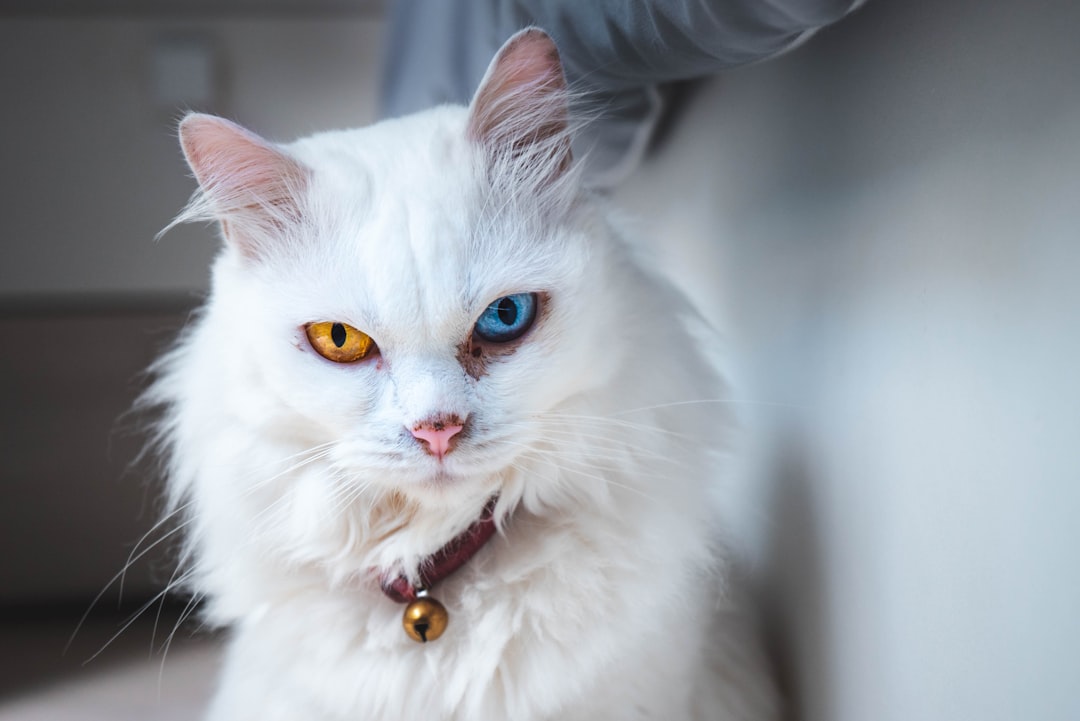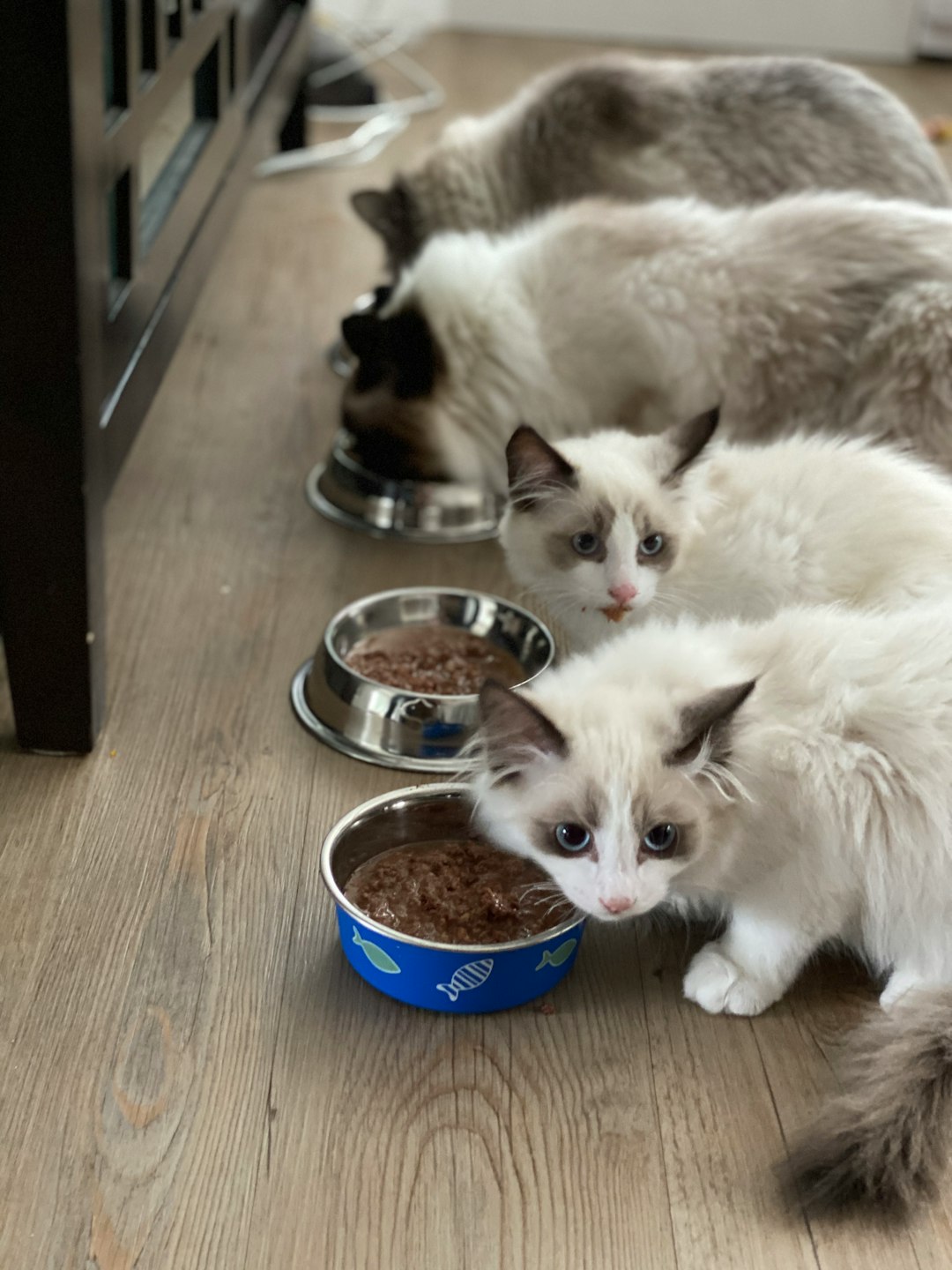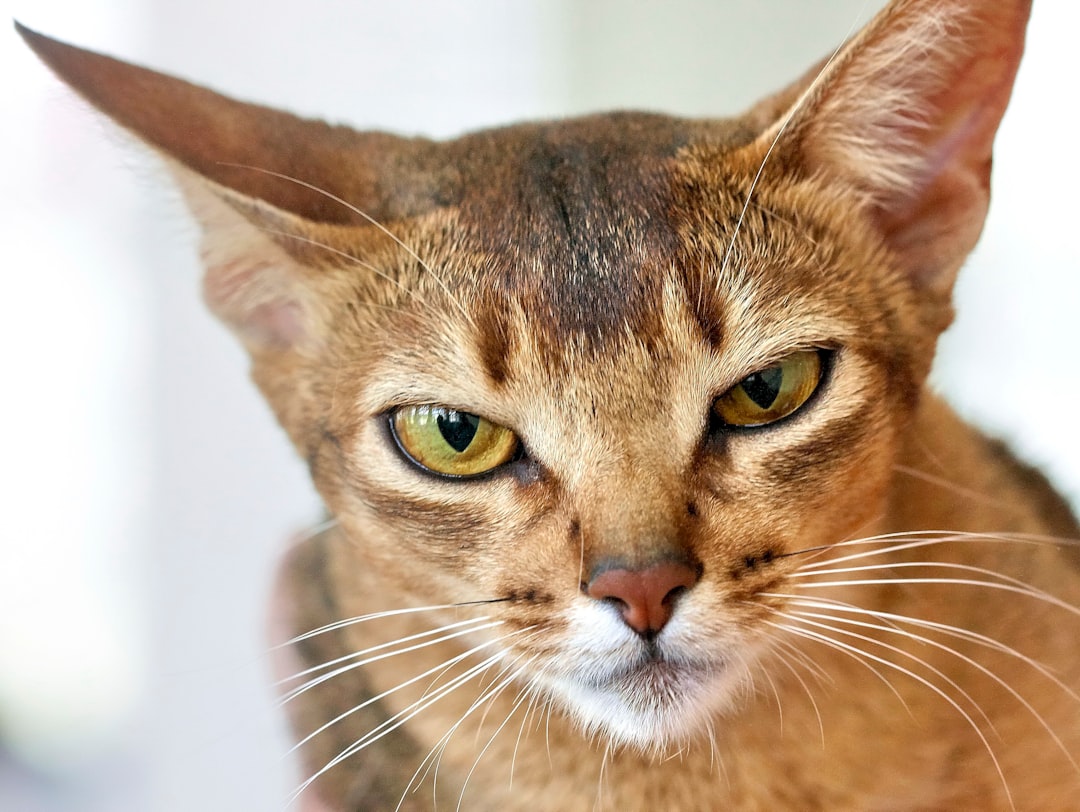Are you concerned about the quality of commercial cat food and its impact on your feline friend’s health? Switching to homemade cat food can be an excellent solution that provides your cat with nutritious, delicious meals made from fresh ingredients. Not only can you cater to your cat’s specific dietary needs, but you can also bond with your furry companion by preparing meals tailored just for them. In this blog post, we will explore the numerous benefits of homemade cat food, essential ingredients to include, easy-to-follow recipes, and helpful tips for preparation and storage. Additionally, we will discuss common pitfalls to avoid and how to successfully transition your cat to a homemade diet. Let’s dive into the world of homemade cat food and ensure your pet enjoys every meal!
The Benefits of Homemade Cat Food
When it comes to diet, felines are not just picky eaters; they thrive on a balanced diet that meets their nutritional needs. Creating your own cat meals at home can be immensely beneficial. Below are several key points that highlight why opting for self-prepared meals can be advantageous for your furry friend.
Understanding the Nutritional Advantages
Feeding your cat well begins with knowing what their body needs. By preparing their meals yourself, you can ensure they receive key nutrients. Key benefits include:
- Quality control: You can choose high-quality meats, fresh vegetables, and healthy grains.
- Balanced diet: You have the flexibility to create meals tailored specifically to your cat’s age, weight, and health issues.
- Nutritional variety: Homemade preparations allow for a diverse menu, preventing boredom and promoting a well-rounded diet.
| Nutrient | Benefits for Cats | Source |
|---|---|---|
| Protein | Essential for muscle development | Chicken, fish, beef |
| Omega-3 fats | Supports skin and coat health | Salmon, sardines |
| Fiber | Aids digestion | Sweet potatoes, peas |
| Vitamins | Boosts immune function | Carrots, spinach |
Cost-effectiveness of Homemade Meals
Many pet owners find that making meals for their cats at home is easier on their wallets than purchasing commercial options. Here are some points to consider:
- Bulk purchasing: By buying ingredients in larger quantities, you can save money in the long run.
- Reduced waste: Leftover ingredients from your meals can often be repurposed, reducing grocery costs.
- Avoiding expensive brands: Homemade meals eliminate the need for high-priced commercial food without compromising on nutrition.
Better Control Over Ingredients
When preparing your cat’s food, you have complete control over what goes into each meal. This aspect has multiple benefits:
- Allergen management: You can avoid specific allergens and ingredients that are harmful or not suitable for your cat.
- Avoiding fillers and preservatives: Many commercial products include unwanted fillers, preservatives, and artificial additives, which can be negated with homemade options.
- Tailored recipes: You can adjust recipes according to your cat’s preferences or dietary restrictions, ensuring a meal that is not only nutritious but also enjoyable.
By understanding the myriad benefits of preparing meals yourself, you can significantly enhance your cat’s health and happiness.
Essential Ingredients for Nutritious Homemade Cat Food
Creating nourishing meals for your feline companion requires a careful selection of ingredients. Ensuring that each meal is well-balanced is crucial for their health. Here’s a breakdown of the essential components to include:
Proteins: Choosing the right sources
Proteins serve as the foundation of your cat’s diet since they are obligate carnivores, meaning their bodies thrive on animal-based proteins. Here are ideal sources to consider:
- Chicken – A lean protein that’s easily digestible.
- Turkey – Rich in amino acids and low in fat.
- Fish (like salmon or tuna) – Packed with omega-3 fatty acids, beneficial for fur and skin.
- Beef – Offers iron and B vitamins, boosting energy.
When selecting protein sources, ensure they are fresh and preferably free-range or wild-caught to maximize nutritional value.
Carbohydrates and fibers for a balanced diet
Though cats do not require carbohydrates in the same way they need proteins, incorporating the right sources can improve digestive health and provide some energy. Consider including:
- Brown rice – A whole grain that aids digestion.
- Sweet potatoes – Rich in vitamins A and C, they’re also a healthy carbohydrate.
- Pumpkin – Excellent for fiber, promoting digestive health.
- Peas – Provides protein and fiber without excessive carbs.
These ingredients can enhance the texture and add bulk to the meals but should not dominate the diet.
Vitamins and minerals to include
Ensuring that your cat receives essential vitamins and minerals is vital for maintaining overall health. Key nutrients include:
| Nutrient | Source | Benefits |
|---|---|---|
| Vitamin A | Liver (chicken or beef) | Supports vision, immune health, and skin health |
| Taurine | Muscle meat and fish | Vital for heart function and vision |
| Calcium | Ground eggshells or bone meal | Important for bones and teeth |
| Omega-3 | Fish oil | Promotes a healthy coat and skin |
| B Vitamins | Whole grains and organ meats | Critical for energy metabolism and nerve function |
Including these nutrients ensures your cat is not only satisfied but receives a comprehensive range of benefits from their meals. By mixing these components thoughtfully, you will create a healthy and appetizing option for your furry friend.
Easy Homemade Cat Food Recipes to Try
Creating nutritious meals for your feline friend can be both easy and rewarding. Here are three delightful recipes that are not only simple but will also provide the essential nutrients your cat needs.
Simple Chicken and Rice Recipe
This recipe is perfect for cats who love poultry. It combines lean chicken and wholesome rice, making it ideal for a balanced diet.
Ingredients:
- 1 cup cooked, shredded chicken (no bones)
- 1/2 cup cooked brown rice
- 1/4 cup carrots, finely chopped (cooked)
- 1/4 cup peas (cooked)
Instructions:
- Cook the chicken in boiling water until fully cooked, then shred it.
- Prepare brown rice according to package instructions.
- Mix the shredded chicken, rice, and vegetables in a bowl.
- Allow it to cool before serving.
Tasty Fish and Vegetable Blend
Cats often adore fish, making this recipe an instant favorite. Rich in Omega-3 fatty acids, this meal supports skin and coat health.
Ingredients:
- 1 cup canned tuna in water (drained)
- 1/4 cup sweet potatoes, mashed (cooked)
- 1/4 cup spinach (cooked and chopped)
Instructions:
- Drain the canned tuna and place it in a bowl.
- Add the mashed sweet potatoes and spinach, mixing thoroughly.
- Serve at room temperature.
Beef Stew for Cats: A Hearty Option
This satisfying dish is great for colder months, providing warmth and nourishment with its hearty ingredients.
Ingredients:
- 1 cup lean ground beef
- 1/2 cup carrots, diced (cooked)
- 1 medium potato, peeled and diced (cooked)
- 1/2 cup beef broth (low sodium)
Instructions:
- Brown the ground beef in a skillet until fully cooked.
- Combine the beef with carrots, potatoes, and beef broth in a pot.
- Simmer over low heat for 10 minutes, then let cool before serving.
| Recipe | Main Ingredient | Cooking Time | Nutritional Benefit |
|---|---|---|---|
| Chicken and Rice | Chicken | 15 minutes | High in protein |
| Fish and Vegetable | Canned Fish | 10 minutes | Omega-3 rich |
| Beef Stew | Ground Beef | 20 minutes | Hearty and filling |
These recipes can serve as a great introduction to making homemade cat food, ensuring your cat enjoys both the taste and health benefits!
Tips for Preparing and Storing Homemade Cat Food
Creating nutritious meals for your feline friend can be a delightful experience, but it’s crucial to follow certain guidelines to ensure their safety and health. Here are essential tips for preparing and storing meals effectively.
Hygiene practices while preparing meals
Maintaining hygiene during the meal preparation process prevents contamination and ensures the food you provide is safe. Here are some essential hygiene practices:
- Wash your hands: Always thoroughly wash your hands with soap and warm water before and after handling any ingredients.
- Clean surfaces: Use disinfectant wipes or a suitable cleaning solution to sanitize countertops and cooking surfaces.
- Use separate utensils: Employ different cutting boards and utensils for meat as opposed to vegetables to avoid cross-contamination.
- Inspect ingredients: Look for freshness in all ingredients. Discard any expired or spoiled products immediately.
Best practices for safe storage
Proper storage is vital to maintain the quality and nutritional value of the meals. Here are best practices to consider:
| Storage Method | Length of Time | Tips |
|---|---|---|
| Refrigeration | Up to 3-4 days | Store in an airtight container to avoid moisture and contamination. |
| Freezing | Up to 2-3 months | Portion meals into single servings before freezing; label with dates. |
| Thawing | Overnight in the fridge | Avoid defrosting at room temperature; always use the refrigerator to ensure safety. |
- Use airtight containers: Invest in good quality, airtight containers to keep the food fresh and prevent spoilage.
- Avoid refreezing: Once thawed, do not refreeze any leftover meals as this can compromise safety and quality.
How to properly portion meals
Proper portioning allows you to monitor your cat’s dietary intake effectively. Here’s how to do it:
- Calculate daily requirements: Consult with your veterinarian to determine the ideal caloric intake based on your cat’s age, weight, and activity level.
- Use measuring equipment: Utilize measuring cups or a food scale for accuracy. This practice helps in maintaining consistent meal sizes.
- Label meals: Write down the ingredients and date on each container. This helps you keep track of freshness and nutrition.
By following these tips, you can ensure that the meals you prepare are both safe and nutritious, contributing positively to your cat’s well-being.
Common Mistakes to Avoid When Making Homemade Cat Food
Creating nourishing meals for your feline friend can be a rewarding experience, but there are several pitfalls to watch out for. Avoiding these mistakes will ensure that your pet stays healthy and happy.
Neglecting nutritional balance
One of the most significant errors is overlooking the nutritional balance required for a cat’s diet. Cats are obligate carnivores, meaning they require specific nutrients:
- Protein: Essential for muscle growth and energy.
- Taurine: An amino acid vital for heart and eye health.
- Omega-3 Fatty Acids: Important for skin and coat health.
Table: Key Nutritional Components for Cats
| Nutrient | Importance | Sources |
|---|---|---|
| Protein | Muscle growth and energy | Chicken, turkey, fish |
| Taurine | Heart and vision health | Meat, eggs, dairy |
| Omega-3 Fatty Acids | Skin and coat health | Fish oil, flaxseed oil |
Ensure that each meal incorporates the necessary vitamins and minerals. You might consider consulting pet dietary guidelines or professionals when planning these meals.
Using harmful ingredients
Another mistake is incorporating harmful or toxic ingredients. Some common foods that are toxic to cats include:
- Onions and garlic: Can destroy red blood cells.
- Chocolate: Highly toxic and can lead to serious health issues.
- Certain fruits: Grapes and raisins can cause kidney failure.
Additionally, avoid using too many grains, as cats have limited ability to digest them. Instead, focus on providing high-quality animal proteins and appropriate vegetables.
Not consulting with a vet
Neglecting to seek expert advice can lead to imbalanced diets. Consulting a veterinarian ensures your meals meet your cat’s specific nutritional needs. A vet can help:
- Assess your cat’s overall health.
- Recommend appropriate recipes based on age and health conditions.
- Suggest supplements if necessary.
Taking the time to work with a professional can prevent long-term health issues and ensure your cat thrives on its new diet. Remember, keeping your furry friend healthy is worth the effort!
Transitioning Your Cat to Homemade Cat Food
Transitioning your feline friend to a new diet can be an important process for their overall health and well-being. It’s crucial to approach this change cautiously and attentively.
Signs your cat may need a diet change
Before you begin the transition, it’s essential to recognize that your cat might benefit from a new diet. Look for the following signs:
- Frequent Vomiting: Regularly vomiting food may indicate intolerance or allergy to current ingredients.
- Poor Coat Condition: Dull, dry fur or excessive shedding could suggest nutritional deficiencies.
- Weight Issues: Sudden weight gain or loss may indicate an imbalance in diet.
- Lack of Energy: If your cat seems lethargic or less playful, it may be a sign of an unbalanced diet.
- Gastrointestinal Issues: Diarrhea, constipation, or gas may indicate that a change is necessary.
Steps to slowly introduce homemade meals
Introducing new meals should be a gradual process to prevent gastrointestinal upset. Follow these steps:
- Start with Small Portions: Begin by mixing a small amount of new food with their current diet.
- Increase Proportions Gradually: Over a week or two, slowly increase the portion of new food while decreasing the old food.
- Monitor Reactions: Watch for any adverse reactions such as vomiting or diarrhea. If any arise, decrease the new food’s proportion.
- Consider Palatability: Ensure that the new meals are appealing. Some cats can be very particular about taste and texture.
- Maintain Variety: Occasionally rotate between different recipes to prevent your cat from getting bored and to ensure a balanced diet.
Monitoring your cat’s health during the transition
It is important to keep a close eye on your cat’s health while changing their diet. Here’s how:
- Keep a Health Journal: Record any changes in behavior, appetite, or weight throughout the transition.
- Vet Check-Ups: Schedule professional appointments to monitor your cat’s health during the diet change.
- Watch for Allergies: Identifying and avoiding any ingredients that may trigger allergies is essential.
- Adjust as Needed: If your cat shows signs of distress or doesn’t adapt well to the new food, consider adjusting the recipe or consulting a veterinarian for tailored advice.
By taking the time to transition your cat thoughtfully, you can ensure that they enjoy the benefits of a healthier diet while minimizing any potential health issues.
Frequently Asked Questions
What ingredients are commonly used in homemade cat food recipes?
Homemade cat food recipes typically include a variety of ingredients to ensure a balanced diet. Common ingredients include high-quality protein sources such as chicken, turkey, and fish; carbohydrates like rice or sweet potatoes; and vegetables such as carrots and peas. Additionally, supplements such as fish oil, taurine, and vitamins may be added to ensure the meal is nutritionally complete. It’s essential to research and ensure that the meals meet your cat’s specific dietary needs.
Can I use leftovers from my own meals in my cat’s homemade food?
While it might seem convenient to use leftovers for your cat’s meals, it’s important to be cautious. Some human foods can be harmful to cats, including onions, garlic, chocolate, and certain spices. If you consider using leftovers, ensure they are safe for feline consumption, free of toxic ingredients, and that they meet the nutritional requirements for cats. It’s always best to prepare meals specifically formulated for your cat’s dietary success.
How do I ensure my homemade cat food is nutritionally balanced?
To ensure your homemade cat food is nutritionally balanced, consult with a veterinarian or a pet nutritionist, who can provide guidance on essential nutrients that should be included in your cat’s diet. Ingredients should cover protein, carbs, vitamins, and minerals. You may also consider using commercially available supplements specifically designed for homemade pet diets to fill any nutritional gaps. Regularly monitoring your cat’s health and weight can help in fine-tuning their meals.
How often should I feed my cat homemade food?
The frequency of feeding your cat homemade food depends on their age, size, and activity level. Generally, adult cats can be fed two meals a day, while kittens may require more frequent feeding, such as three to four times daily, to support their growth. Always observe your cat’s behavior and appetite, and adjust meal frequency and portion sizes accordingly. Consistency in feeding times helps establish routine and can aid in digestion.



